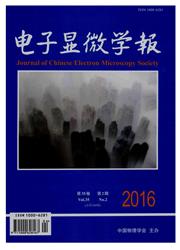

 中文摘要:
中文摘要:
本文利用原子力显微镜、透射电子显微镜、X射线衍射等分析手段研究了反应射频磁控溅射截然不同的阶段,其临界转变温度在790℃附近。进一步分析表明,决定低温退火的晶粒长大机制为Zn填隙原子扩散机制,而决定高温退火时的晶粒长大机制为O空位扩散机制。界面分析结果显示:在临界转变温度以下,ZnO薄膜与基体Si之间基本不发生界面反应;在高温退火过程中,ZnO薄膜与基体Si之间的界面反应主要以氧化后的Si表面层向ZnO扩散的方式进行,并导致了薄膜应力的迅速增加,而界面反应开始之前的薄膜应力的变化,则是由于晶粒合并所引起的。
 英文摘要:
英文摘要:
Using reactive radio frequency magnetron sputtering, ZnO films were deposited on Si (001) substrate at room temperature and annealed at different temperatures ranging from 300 to 1 000 ℃ in air. The annealing effect has been studied by analyzing morphological and structural evolution of ZnO films quantitatively. A coarsening transition was found occurring at a temperature of about 790 ℃. For the annealed films above and below this temperature, the diffusion mechanisms of oxygen vacancies and znic interstitials are assigned to be responsible for the coarsening behaviors, respectively. The coarsening transition temperature also dominated the reaction between ZnO film and Si substrate. SiO2 diffusing towards ZnO film occurred at high temperature and resulted in the considerable increase of inner stress in the films.
 同期刊论文项目
同期刊论文项目
 同项目期刊论文
同项目期刊论文
 Optical and electrical properties of Zn1-xCdxO films grown on Si substrates by reactive radio-freque
Optical and electrical properties of Zn1-xCdxO films grown on Si substrates by reactive radio-freque Effect of O-2 partial pressure and substrate temperature on the plasma emission spectra and ZnO grow
Effect of O-2 partial pressure and substrate temperature on the plasma emission spectra and ZnO grow Two-step growth of ZnO films deposited by reactive radio-frequency magnetron sputtering on Si(001) s
Two-step growth of ZnO films deposited by reactive radio-frequency magnetron sputtering on Si(001) s 期刊信息
期刊信息
